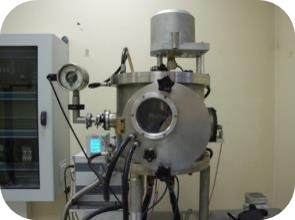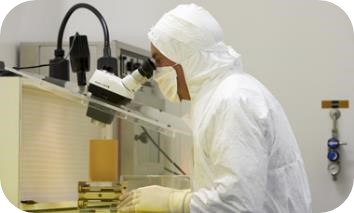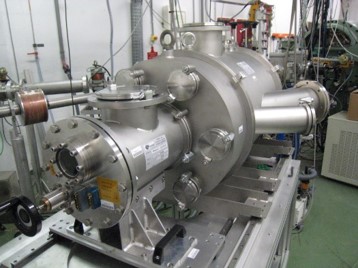ONERA firmly anchored in NewSpace: participation in the 4S symposium
The 4S (Small Satellite Systems and Services) symposium brought together the entire Nanosatellites community, and ONERA, with its spatial and scientific cross-disciplinary expertise and its testing facilities making it a natural stakeholder in the subject, was there. Focus on its activities in this area.
Today, we hear a lot of talk about NewSpace, a scientific and now economic trend that can create economic and sustainable value. Indeed, the miniaturisation of on-board electronics in the ever-smaller, less energy-intensive or reusable satellite payloads brings with it a raft of technologies that need to be improved and which are of interest to new players. The steady drop in the cost of accessing space also makes small satellite constellations easier to launch. ONERA, a bridgehead between research and industry, is already supporting its partners in many NewSpace projects.
Past research and cross-cutting know-how
Since the 1960s, ONERA’s mission has expanded to include the space sector, and over the past few years it has been developing space systems adapted to “nanosats”, the mini-satellites that make it possible to democratise the payloads carried into space. ONERA has worked on various scientific and technological missions, the objectives of which range from studying the ionosphere and radiation belts, conducting observations of the Earth, and studying the technical means of mitigating the effects of electrostatic discharges inside satellites.
These studies are based on technological building blocks developed in recent years such as onboard cameras, and “freeform” optics design.
These technologies, ruggedised to take account of the rigours of space, such as radiation, are fit for deployment. The use of this know-how is today supported by an internal cross-disciplinary laboratory at ONERA, the ONATLab, also offering the benefits of being able to carry out experimental tests using dedicated laboratory resources.
The multidisciplinary nature of ONERA is a major asset for addressing the nanosatellites market, encompassing optics, electromagnetism and radar, physics, materials, information processing and systems, aerodynamics and energy. ONERA is organised around 7 different scientific departments, but which are able to communicate with each other in order to resolve the cross-cutting issues of ONERA’s partners.
Test facilities
With its dedicated testing facilities, ONERA can conduct a variety of experiments: electromagnetic compatibility and discharge tests in the anechoic and reverberation chambers in Toulouse; electric propulsion tests with the ERIS test bench to accurately measure the small thrusts of these mini-thrusters at up to 1 kW; electrostatic discharge benches (JONAS test bench) and vibration benches (CASSIS laboratory); radiation testing on components (AXEL laboratory with combined electron/proton/UV radiation testing); thermal vacuum chamber; infrared camera calibration equipment; and the PESO bench for testing technologies for small space system autonomy.
In addition, ONERA is developing an advanced digital simulation laboratory for simulating complex scenarios: the SpaceLab. This enables simulation of the space environment, mission control, or the management of constellations or swarms. The simulated objects range from satellites and launchers to ground and flight sensors.
ONERA: bridgehead between research and industry for a wide variety of projects and partners
ONERA working with SMEs
As part of the launch in 2020 of the BLAST programme to support and accelerate deep-tech start-ups in the aeronautics-space-defence sector, ONERA is gradually establishing a track record for successful technology transfers to start-ups, which it has helped to get up and running.
ONERA conducts many research projects related to NewSpace. For example, the CREME (Cubesat Radiation Environment Monitoring Experiment) project, dedicated to space meteorology, in partnership with ISAE-SUPAERO, the U-SPACE company, the Toulouse-based SMEs, EREMS and TRAD, along with 3D-PLUS, aims to produce a monitor with a reduced footprint for the study of radiation belts. The CROCUS (ChaRging On CUbeSat) project, in partnership with Ecole Polytechnique’s space centre, aims to study electrostatic discharges in satellites, validate a new generation of payloads, and demonstrate the efficiency of an ONERA electron emitter to limit the negative charge of satellites. Lastly, there is the FLYLAB mission, which paves the way for Earth observation (in the visible and infrared) and for formation flying techniques.
ONERA is also involved in missions in collaboration with LATMOS: CUIONO payload of the INSPIRE-SAT7 nanosat project, and the ASTERIX nanosat, for which the objective is to measure terrestrial radiation imbalance by designing two onboard cameras, both developed by ONERA (in partnership with B-PHOT Brussels Photonics).
ONERA’s scientific strategy: clearing the path toward the future
ONERA is organised around a combination of application research and more fundamental activities, to strike a subtle balance that allows ONERA to work on topics of the future.
To do this, it draws on its roadmaps, inspired by its Scientific Strategic Plan (ONERA scientific guidelines 2015–2025). While several roadmaps mention developments that will be useful in NewSpace (“New simulation methods” for example), the “Efficient and safe access to space” and “Sustainable and safe Space” roadmaps clearly show the forward-looking nature of the ONERA guidelines.


